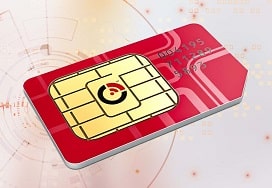Iot Sim copyright The best IoT SIM Cards
In the panorama of the Internet of Things (IoT), connectivity standards and protocols play a crucial position in making certain gadgets can communicate seamlessly. As extra gadgets are connected, the need for effective interoperability will increase, resulting in quite a lot of standards that serve completely different use cases and requirements. This comparison of IoT connectivity standards and protocols highlights the nuances that differentiate each know-how, providing a clearer understanding of which could suit particular functions.
LoRaWAN (Long Range Wide Area Network) is likely certainly one of the dominant protocols typically utilized in IoT functions that require long-range communication. Its low energy consumption makes it significantly efficient for battery-operated gadgets, enabling them to function for several years without needing a battery replacement. The protocol is designed for wide area networks, making it suitable for urban, rural, and remotely deployed devices such as environmental monitors and smart city functions.
On the other end of the spectrum, MQTT (Message Queuing Telemetry Transport) is a lightweight protocol designed for resource-constrained units and low-bandwidth, high-latency networks. Due to its publish-subscribe model, it allows units to speak in close to real-time, making it particularly well-liked for purposes in smart houses and industrial automation. MQTT isn't constrained by location, enabling units to communicate regardless of where they're located, so lengthy as there is web entry.
Iot Sim Card Europe SIM Card IoT Data Plan

Zigbee and Z-Wave are two different protocols that have gained traction, particularly in residence automation contexts. Zigbee operates on low power and is designed for low data rate wi-fi private space networks. With its mesh networking functionality, it facilitates communication between a quantity of gadgets, creating a sturdy community that may prolong its vary significantly. Z-Wave, while comparable, typically operates on a lower frequency and has a definite architecture that tends to work higher in indoor settings. Its targeting of client products provides it an edge in user-friendly functions.
Bluetooth also plays a vital role in IoT connectivity, particularly in wearable expertise and close by communication situations. The introduction of Bluetooth Low Energy (BLE) has expanded its functionality by allowing gadgets to speak with minimal battery usage. This protocol is ideal for applications the place low power is important however nonetheless requires an affordable knowledge throughput. The range tends to be shorter, making it suitable for environments like private health devices, smart locks, and different proximity-focused technologies.

Another vital player in the IoT house is Cellular connectivity, together with LTE and the emerging 5G networks. These technologies supply high data charges and widespread protection, making them ideal for functions that require real-time knowledge transfer, similar to autonomous vehicles and distant surveillance techniques. However, their power consumption is generally larger in comparability with other protocols, which may be a limiting issue for IoT gadgets with battery constraints. The evolution of 5G is particularly exciting, because it promises to facilitate even bigger numbers of related devices with decrease latency.
A lesser-known, but impactful, standard is NB-IoT (Narrowband IoT), specifically designed for low-power, wide-area networks. It helps a excessive number of connected gadgets over a larger area, making it well-suited for rural purposes, smart metering, and smart agriculture. Its low bandwidth necessities are sufficient for transmitting small information packets, permitting devices to operate effectively with minimal power consumption.
copyright Iot Sim Card IoT SIM card IoT M2M eSIMs
Comparing these protocols, a major factor to contemplate is the balance between vary, power consumption, and data price. Zigbee and Z-Wave excel in mesh networks but could not cover as wide an space as LoRaWAN. Meanwhile, protocols like MQTT can prioritize data switch efficiency over distance. The alternative between using a cellular framework or a specialized IoT protocol typically hinges upon the precise wants of an application, including geographic and technical constraints.
Security stays a pressing concern throughout IoT implementations. With the variety of connectivity standards, guaranteeing secure communication is paramount. Various protocols handle security in different methods, incorporating measures such as encryption and authentication protocols to safeguard information. MQTT, for instance, permits for secure connections and payload encryption, whereas protocols like LoRaWAN have mechanisms to authenticate units communicating over the community.
Compatibility is one other essential side. As manufacturers more and more develop IoT solutions, the power to connect gadgets from completely different distributors is key. Standards like Zigbee and Z-Wave have established certification packages to authenticate devices’ interoperability. This compatibility fosters a more cohesive smart house environment, permitting devices to work in live performance somewhat than isolation.
Future developments in IoT connectivity standards are regularly increasing the possibilities. Researchers and business consultants are creating superior protocols that mix the strengths of existing technologies whereas addressing their weaknesses. The integration of synthetic intelligence (AI) and machine learning into IoT networks is further enhancing automation and information analysis, pushing protocols to evolve and improve in real-time.
Nb-Iot Sim Card The best IoT SIM Cards
Ultimately, deciding on an IoT connectivity standard or protocol isn't merely a technical choice; it ought to align with the objectives of the applying and the wants of its customers. The right selection may mean the distinction between a profitable deployment and a project plagued by interoperability challenges, unnecessary prices, or reduced performance.
As IoT expertise continues to mature, the importance of understanding and choosing applicable connectivity standards and protocols will solely grow. Industry individuals and builders should stay vigilant of trends and adjustments that impression the ecosystem. Knowledge of these protocols is important, because it equips stakeholders to make knowledgeable choices that can define the next era of connectivity.
In conclusion, the comparability of IoT connectivity standards and protocols reveals a fancy but fascinating panorama. By understanding the advantages and limitations of each standard, developers can make educated decisions that may optimize their IoT deployments, enhancing effectivity and effectiveness and in the end paving the way for a more related and intelligent future.
- Various IoT connectivity standards, similar to MQTT, CoAP, and HTTP, cater to completely different information transmission wants, influencing effectivity and utility suitability.
- MQTT is light-weight and optimized for high-latency networks, making it perfect for low-bandwidth, resource-constrained devices.
- CoAP supports RESTful interactions and operates over UDP, allowing for reduced overhead compared to traditional protocols used over TCP.
- Zigbee and Z-Wave give attention to low-power, low-data functions, perfect for smart residence devices and sensor networks.
- NB-IoT and LTE-M offer cellular connectivity specifically designed for IoT purposes, providing wider coverage and better penetration in urban environments.
- Wi-Fi and Bluetooth, whereas prevalent, can battle with energy consumption and scalability in massive IoT ecosystems, making them much less best for certain use cases.
- LoRaWAN enables long-range, low-power communication, ideal for functions in distant areas requiring rare knowledge transmission.
- Each standard or protocol might come with unique security features, influencing the selection primarily based on the IoT deployment's risk model.
- The growing trend of multi-protocol environments allows devices to modify between standards, enhancing flexibility and interoperability within IoT ecosystems.
- Compatibility issues can come up from numerous IoT connectivity standards, necessitating careful planning to ensure seamless communication throughout gadgets and platforms.undefinedWhat are the primary IoT connectivity standards out there today?
Iot Global Sim Card Buy IoT SIM Cards
The main IoT connectivity standards embrace MQTT, CoAP, check my site LoRaWAN, Z-Wave, Zigbee, and cellular standards like NB-IoT and LTE-M. Each of these standards serves different use cases, providing various ranges, power consumption, and data transmission capabilities.
How does MQTT differ from CoAP by means of use cases?
(Iot Sim copyright)
MQTT is designed for high-latency and low-bandwidth environments, making it excellent for eventualities requiring reliable messaging, corresponding to remote monitoring. CoAP, on the opposite hand, is tailored for constrained gadgets and networks, making it appropriate for functions like smart residence automation the place simplicity and effectivity are crucial.

What elements ought to I think about when selecting an IoT protocol for my application?
Best IoT SIM Card Prepaid 4G SIM Card Data
Key elements include the application’s necessities for range, energy consumption, data payload dimension, and network situations - Global Sim Card Iot. Additionally, contemplate the extent of security and scalability needed, in addition to infrastructure and gadget interoperability.
Is security a serious concern when evaluating IoT connectivity standards?
Yes, safety is a paramount concern. Different standards offer various levels of security measures, like data encryption and authentication measures. It’s important to judge how each standard addresses potential vulnerabilities to ensure the safety of delicate information.
Iot Gsm Sim Card Ruggedized IoT SIM eSIM
Which connectivity protocol is best for long-range communication?
LoRaWAN is usually thought of the best for long-range communication due to its capacity to cover distances of as a lot as 15 kilometers in rural areas. It is especially efficient in applications like agricultural monitoring and smart city deployments where gadgets are unfold out over massive areas.
How do energy consumption ranges range amongst totally different IoT protocols?
Prepaid Iot Sim Card SIM Card IoT Data Plan
Power consumption varies considerably amongst protocols. For example, LoRaWAN and Zigbee are designed for low energy usage, suitable for battery-operated devices needing long operational life. In contrast, cellular protocols like NB-IoT might consume extra energy however supply higher bandwidth for crucial functions.
Can a quantity of connectivity standards coexist in the identical IoT environment?
Iot Sim Card North America Need an IoT SIM card started
Yes, a number of connectivity standards can coexist inside the similar environment. This allows for greater flexibility and integration of various devices across different functions. However, it does require a well-architected system that may handle and route knowledge between totally best iot sim card different protocols effectively.
What role does scalability play in choosing an IoT connectivity standard?
Scalability is crucial when deciding on a connectivity standard, especially for purposes anticipated to develop over time. Some protocols permit for straightforward addition of units and seamless integration into existing networks, while others could have limitations that might hinder enlargement.
Buy Iot Sim Card What is an IoT SIM Card?
Are there specific industries that favor specific IoT protocols?
Yes, specific industries often favor explicit IoT protocols primarily based on their distinctive requirements. For instance, smart agriculture tends to favor LoRaWAN as a outcome of its lengthy range, while home automation usually makes use of Zigbee or Z-Wave for their low power consumption and mesh networking capabilities.